by Bill Murray
 We’re here early this year. June has just gotten started, and after a day or two of intermittent rain with a blustery sky and a stiff wind off Lake Saimaa, fifty degrees Fahrenheit feels a lot colder than the same back in Atlanta. I’ve just learned that it hasn’t been this cold in June since 1968. It snowed today right down the road. The paper took the laconic approach and called it the ‘first snow’ of summer. On the other side of the comfort ledger, we have a fire of easy to light birchwood, and if the Finns understand one thing well, it’s insulation.
We’re here early this year. June has just gotten started, and after a day or two of intermittent rain with a blustery sky and a stiff wind off Lake Saimaa, fifty degrees Fahrenheit feels a lot colder than the same back in Atlanta. I’ve just learned that it hasn’t been this cold in June since 1968. It snowed today right down the road. The paper took the laconic approach and called it the ‘first snow’ of summer. On the other side of the comfort ledger, we have a fire of easy to light birchwood, and if the Finns understand one thing well, it’s insulation.
We come to Finland every summer. The best time to visit is July into August, when the lakes have had a chance to warm, it never gets completely dark, and saunas and swimming are in full swing. To heat your naked body just past tolerable in an old wooden building and then run screaming and jump in the lake is the national pastime.
It’s not time for that yet. Already the days are long again but this year at least, the nights are still jacket-and-gloves cool down on the water, where the fish are jumping and the bird life thrives.
Never in my life have I heard a swan demonstrate the Doppler effect. But such utter silence reigns in the twilight after midnight, when our bit of the lake is glassy still, that far back to the southeast I heard the steady repetition of a swan’s two-note honking from beyond a stand of spruces.
For perhaps half a minute she approached, wings stroking a meter above the water, neck extended, churning forward and back stroke by stroke, steady honking, and in her wake her cry changed pitch as surely as a two-toned Parisian ambulance on the motorway. She continued the half kilometer further I could see her, flying upstream above the lake, announcing her arrival all along the way.
Vegetation has the vivid green of fresh youth; evergreen branches are proud of the brilliant green inch of new growth at their tips. Out in the water the reeds where the fish hide and the sea birds prowl are just poking their heads above water, having their first look around.
Time shift, jet lag and the all night twilight always means it takes a week, more, to really sleep at night, so out on the dock one morning about 4:00, when the sun had probably already risen if you could see the horizon, I watched a deer tip-toe by our cabin. Those who live here year round say they see elk and moose, but I never have, and this was my first Finnish deer. I wonder if they are on the move south to north or north to south or where at this time of year.
The Finnish term for the aurora is ravontulet, or fox tail. It’s an apt comparison, the swirling northern lights to the flamboyance of the Finnish fox, which darts across the road or into the brush, it’s tail trailing behind as long as it’s body.
The only thing is, this year it’s just too cold. Most days the mercury inside the thermometer bulb seems painted onto the 10C/50F spot and not much willing to budge. Sometimes it has been in the Fahrenheit 30s at night and one time, for one moment only, we spied 16C on the car thermometer, a triumphant moment of 62F.
With the wind off the lake, and even though the whole country is pent up and ready, it just isn’t quite time for summer revelry. Not that we don’t do what Finns do in summer anyway, which, mostly, is to sit outside in as much clothing as necessary and grill sausages in front of a body of water.
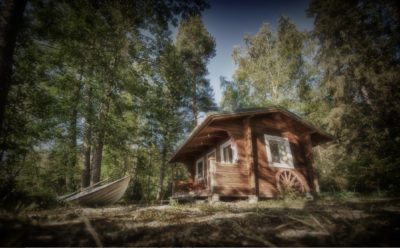 For all that, if this world continues its warming as by most accounts it will, before long the Finns will live in one of the world’s prime vacation spots. Somebody has counted 187,888 lakes in Finland larger than 500 square meters. Think of Minnesota, “The Land of 10,000 Lakes,” which not coincidentally is home to more residents of Finnish ancestry — about 100,000 people — than any other state.
For all that, if this world continues its warming as by most accounts it will, before long the Finns will live in one of the world’s prime vacation spots. Somebody has counted 187,888 lakes in Finland larger than 500 square meters. Think of Minnesota, “The Land of 10,000 Lakes,” which not coincidentally is home to more residents of Finnish ancestry — about 100,000 people — than any other state.
Just as Paris shuts down in late summer, so does Helsinki. You’d best not need to get anything done involving the government in August. Many, many Finns already have summer homes outside the cities.
A lakeside cottage in Finland doesn’t imply American-style country club snobbery. The mother of one of our friends, now into her eighties, still rows her boat across some stretch of water to her summer cabin without plumbing.
It’s not always too cold. One year there were forest fires across Russia. It was smoky and the Finns said if it would just burn up to the border, we’d put the damned thing out. That year was hot. Thirty C is 86F, and that seems to be a benchmark. Beyond about thirty, Finns fear mortal peril from suffocation, or heat stroke.
Being indoors in the dark for long winters means that in summer Finns live outside as much as they can. Fiercely, vociferously. The main sound in the Finnish countryside in June just might be chainsaws putting back wood for the winter. Which is never too far away.
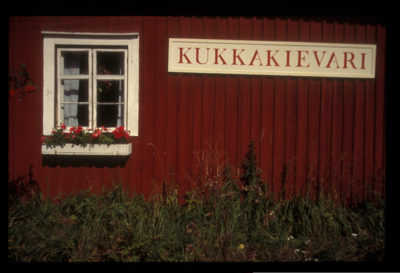 For the same summer-is-short reason, flowers are a big feature of Finnish summer. When I first started coming here my wife’s mother had a flower and coffee shop across the road from her farmhouse called Kukkakievari, literally, I guess, ‘flower inn,’ colloquially maybe something like ‘flowerpot.’
For the same summer-is-short reason, flowers are a big feature of Finnish summer. When I first started coming here my wife’s mother had a flower and coffee shop across the road from her farmhouse called Kukkakievari, literally, I guess, ‘flower inn,’ colloquially maybe something like ‘flowerpot.’
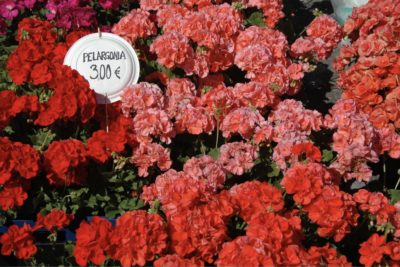 She hung flower baskets all over the garden and had a pot of coffee on all day. She left her phone number and if she was across the road at home, customers would call.
She hung flower baskets all over the garden and had a pot of coffee on all day. She left her phone number and if she was across the road at home, customers would call.
There were trinkets and snacks and sometimes a lady would deliver pirakkas, distinctive, small Finnish pies. Kukkakievari was adjacent to stables, so parents would bring kids to watch the horses and pet the year’s new lambs, and toward the end they’d even hold outdoor concerts featuring local budding musicians.
•••••
My April 3QD column described a train ride across Africa. On that trip we visited the Tsavo National Park in Kenya, which is enduring its worst drought in forty years. To adapt, most of the trees’ leaves there have come off or gone brown, as they concentrate on survival by getting water from their roots, underground, rather than from the sky.
Deciduous trees at home in North America have a similar survival strategy, losing their leaves in the fall to conserve energy during the winter. Seventy-one percent of Finland is wooded, covered with birch and evergreen trees, which have their own adaptations.
Evergreens keep their leaves year round. In the low light of northern winter they must maximize the amount of sunlight they receive, and one way they do it is by radiating their branches horizontally. This spreads their branches over a wider area, allowing more exposure to sunlight.
Where deciduous branches in Georgia reach for the sky and the sun, in a Finnish forest the thin, needle-like leaves capture as much sunlight as they can by having a large surface area relative to their volume, allowing them to absorb more sunlight per unit of mass, even when the sun is low in the sky. Brilliant.
•••••
Finland has been a NATO member for two months now. It may be just the people I talk to, but I think Finland is pretty pleased with itself. There may be just the least bit more of a spring in the civic step around here just now.
Finns are known to be, let’s say, reserved. The standard joke has the Finnish introvert looking at his shoes as he talks to you while the extrovert looks at your shoes. We must be positively up to knee level by now.
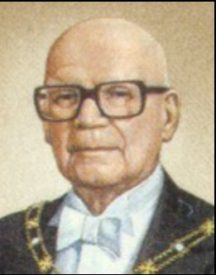
I have my own theory about NATO membership. I think this long yearned-for full integration with the rest of Europe finally puts a satisfying end to the long dénouement associated with the interminable reign of Urho Kekkonen, Finland’s ruler from 1956 to 1982.
Kekkonen’s story is complicated. He is remembered as a statesman for resisting Russian domination and trying to find a modus vivendi with the Soviet Union during the Cold War, which was more challenging for Finland than for most.
While revered as a ‘Father of Modern Finland’ figure by some, he also “crafted a foreign policy so deferential to Moscow that the term Finlandization was coined to describe a geopolitical lapdog.”
Finally, the Finns are finished with Finlandization once and for all. There is precious little accommodation of Russia now, and NATO accession is an occasion for discreet, modest backslapping in a land where emotional displays are rare.
I once read that millions of “I Was There” T-shirts have been sold over the years to commemorate the Beatles’ first Ed Sullivan show appearance in February 1964, when in fact the Ed Sullivan Theater had a capacity of just 728 seats.
It’s a little like that in Finland now. Pretty much everybody claims a variant of, ‘I said years ago we should have joined NATO,’ while in fact, polls say only a minority of Finns favored NATO accession until February 2022.
I spent the week doing the rounds, gauging people’s enthusiasm and I never encountered a single person sour about it. Prideful was more like it. One man said he’d been advocating it for 20 years. Another said that when Russia’s war on Ukraine started, he declared he would protest-resign from the reserves if Finland didn’t apply to join NATO. (Not sure a young man can do that.)
We might call it a kind of Monday morning quarterbacking, or maybe 20/20 hindsight. The term in Finnish is jälkiviisaus, something like ‘delayed wisdom.’
Antony Blinken delivered a speech at Helsinki City Hall on June 2nd, replayed that night on MTV3, Finland’s largest commercial broadcaster. Blinken stuck largely to boilerplate reassurance, but with a few digs at the Russians as he stood on the soil of the newest NATO member, only 185 miles from Vladimir Putin’s home town of St. Petersburg.
He compared Putin’s Ukraine invasion to Stalin’s Winter War on Finland in 1939. He said that in that war, as today in Ukraine, Russia encountered far stiffer resistance from Finland than it anticipated. Finns, of course, knew that better than he.
He suggested that some Russian character flaw caused them to resort to terror then, too, bombing civilians and hospitals. Then as today, Blinken said, the West closed ranks in the long run and defeated Stalin, as it will defeat Putin today.
He went on to list American good deeds around the world as proof it meant to stand by Finland, and I imagine it does, and, not that the Finns intend to rely solely on American help, still I think the Finns were glad to hear it.
•••••
The northern lakes and forests are beautiful as ever. As it did with Covid, wildlife shrugs off people problems and gets on with living. Life hasn’t changed at all in the natural world, down by the lake. But there are new human realities now that Finland has brought its long border with Russia to NATO.
Finland is erecting a border fence, not so much as a military fortification, I don’t think, but more as a political statement. The national border guard broke ground within two weeks of NATO accession on a showpiece three kilometer section of what will become a 200 kilometer steel mesh fence topped with razor wire and surveillance equipment.
The idea, I think, is to build first in areas most accessible by vehicle, as a hedge against mass immigration. The aim would be to head off a repeat of an incident in 2015 in which Russia brought several hundred mostly Syrian immigrants to its common border with Norway and Finland and facilitated their crossing.
That first bit of fence is rising at Imatra, about 35 kilometers north of the border town of Lappeenranta, a town of around 10,000 people.
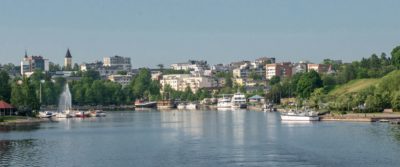
In 2019 I wrote a 3QD column about life along the Finland/Russia border, and spent a little time in Lappeenranta. Those were simpler times.
In 2021 Lappeenranta welcomed over 100,000 visitors; most, it’s fair to say, were moving through to or from Russia. In 2022, the number of visitors fell by more than 90%. The border is closed to all but essential travel.
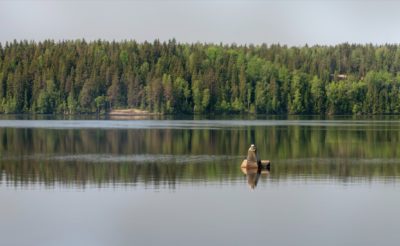
Lappeenranta has always traded with Russia, lying as it does on the shore of Lake Saimaa just twenty kilometers from the current iteration of the border. Somewhere out there in the middle of the lake is a border marker.
The border was closed at the beginning of the war and Finnish businesses have been closing since. The Hotelli Lappeenranta shut down after fifty years, a month after the invasion. It employed a hundred people. Another hotel, the Scandic Laajavuori, closed the next month after twenty years. It employed about fifty. The month after that Hotelli Seurahuone, which employed another hundred, closed after a hundred years. Restaurants, retail and tourism-related businesses have been similarly devastated.
A canal bound for Russia cuts through our little town of Varkaus, about 120 miles upstream from Lappeenranta. So far as anyone I spoke to knew, nothing uses that route to Russia anymore.
 Instead, the local government has made a recreational area along the waterfront, with new foot and bicycle paths and bridges over adjacent rapids. Because with or without trade with Russia, right now it’s first things first. Finland, its gorgeous landscapes, wildlife and people are ready to enjoy summer.
Instead, the local government has made a recreational area along the waterfront, with new foot and bicycle paths and bridges over adjacent rapids. Because with or without trade with Russia, right now it’s first things first. Finland, its gorgeous landscapes, wildlife and people are ready to enjoy summer.
•••••
I write things like this three times a week at Common Sense and Whiskey.

